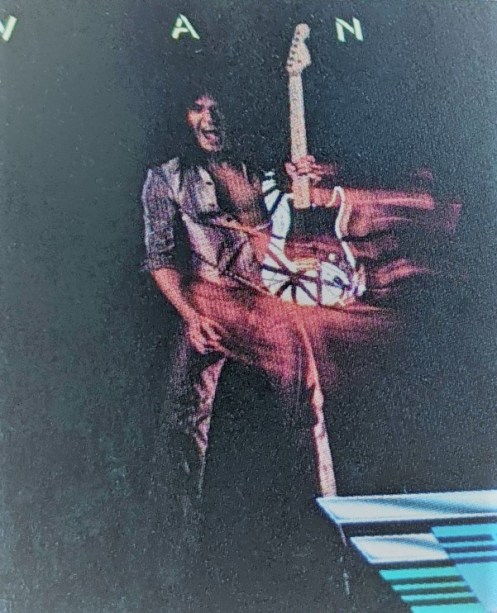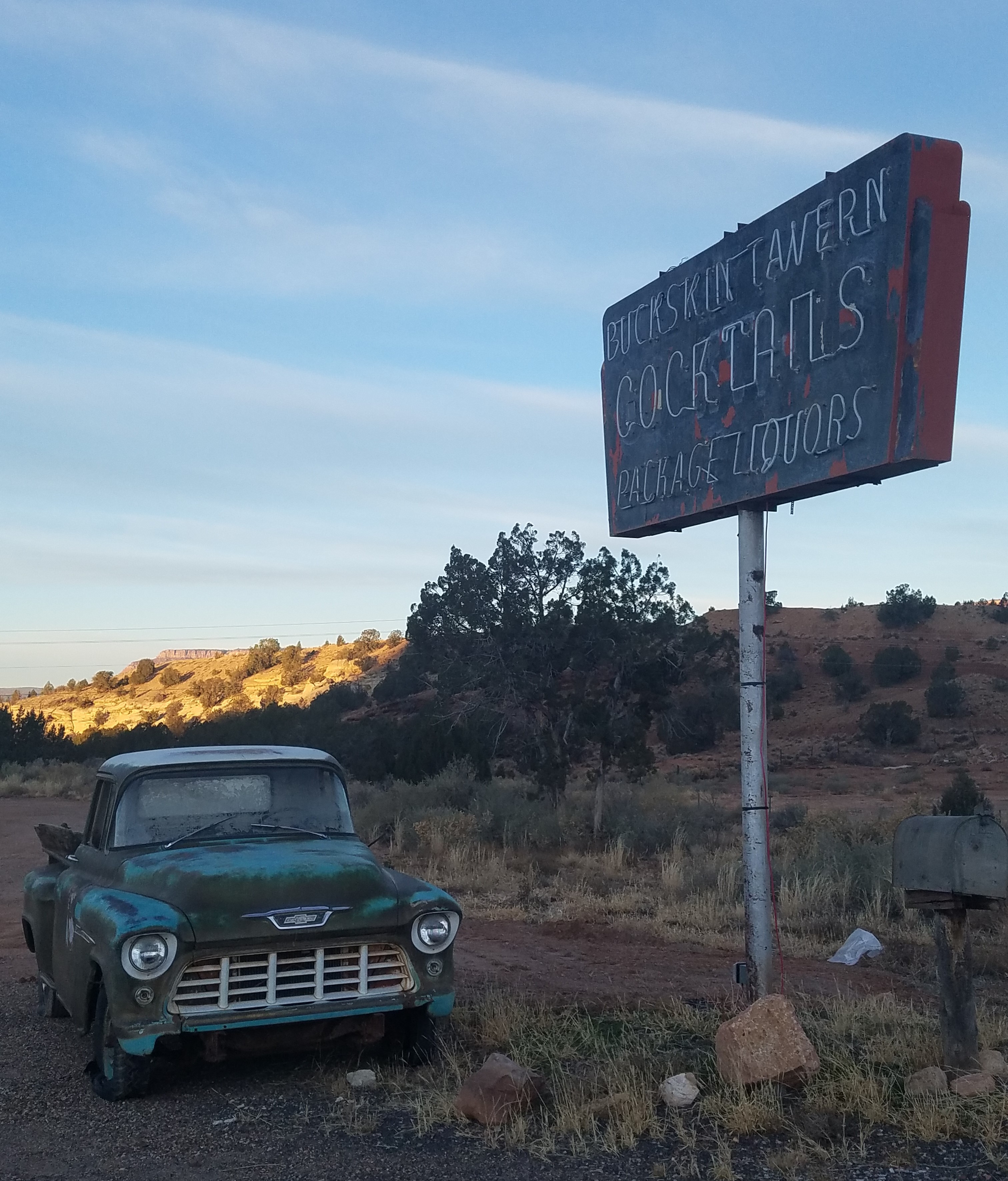The way it was told to me, Frank Marino believed that, upon its carrier’s untimely demise, Jimi Hendrix’s soul (or spirit, or life-force) had merged with Frank’s to create a new combined being, thereby ensuring that Hendrix’s talent would not be lost to the world. The proof presented for this bit of hard rock lore was Frank’s spoken introduction to the final song on the B-side of the 1978 album ‘Live!‘ by Frank Marino and Mahogany Rush. There, Frank says to the crowd,
For all of you, uh, who dug us before, a long time ago, and for those of you who dig it now, Jimi Hendrix…
after which the band delivers a scorching performance of “Purple Haze” that, save for the vocals, any listener would be forgiven for thinking was a live recording of Hendrix himself.
In my early teens, I took as gospel such things put forth by 20-year-old Rick, my then mentor on all things sex, drugs, and rock n’ roll. Rick presented the anecdote not as news of an actual transmogrification but rather as an indicator of Marino’s peculiarity. Knowing that Frank thought himself the keeper of Jimi’s essence only added to my exhilaration at listening to his music. Thankfully, there was no internet or Google at the time to lure me into fact-checking Rick’s tale. Back then, I was allowed to simply believe.

Fast forward four decades and one global pandemic and I was able to buy a ticket to see Frank Marino on stage for the first time. I was stoked. Sure, I needed to refresh my connection with Frank’s music some, but that was easily done via the LPs and CDs aplenty in my stacks. The revisiting brought real joy and, boding well for the show, I enjoyed most of all ‘RealLIVE!’, a disc from the current century (2004). I found myself really looking forward to witnessing in person Frank’s incredible guitar tone and special way with a funky blues.
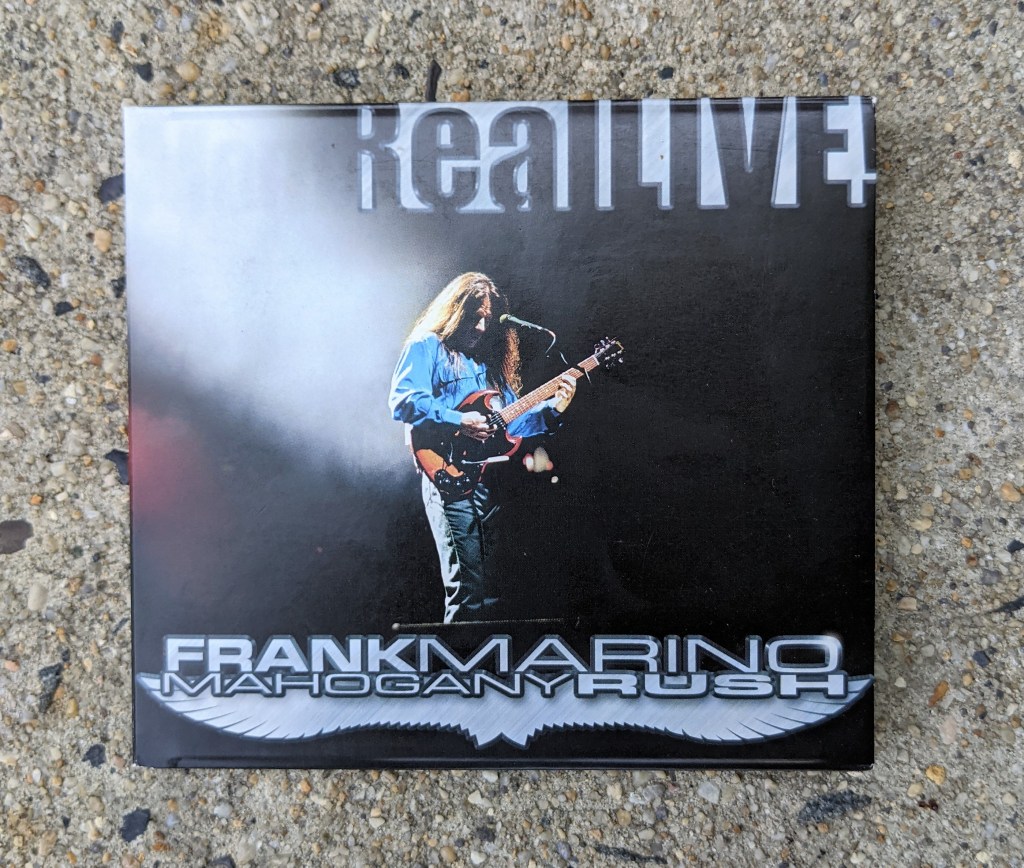
While waiting for the big day, I decided to take a quick look at Frank’s official website, an act that inadvertently led to the unravelling of the story told me by Rick all those years ago. One of the five paragraphs under the ‘Band History’ tab – and the longest one at that – was dedicated to quashing falsehoods suggesting Frank had claimed any kind of visitation by, reincarnation as, or magical endowment from Jimi Hendrix. Apparently, “sensationalists” had embellished the true story of an “overwhelming” LSD trip that put a young Frank in the hospital and would subsequently become “the basis of everything” he would do musically. The implicit message was that I could keep the music, but I would have to cast the tale of FrankenJimi into the recesses where now gather so many prior convictions that cold truth and hard fact have conspired to rob from me. I could no longer simply believe.
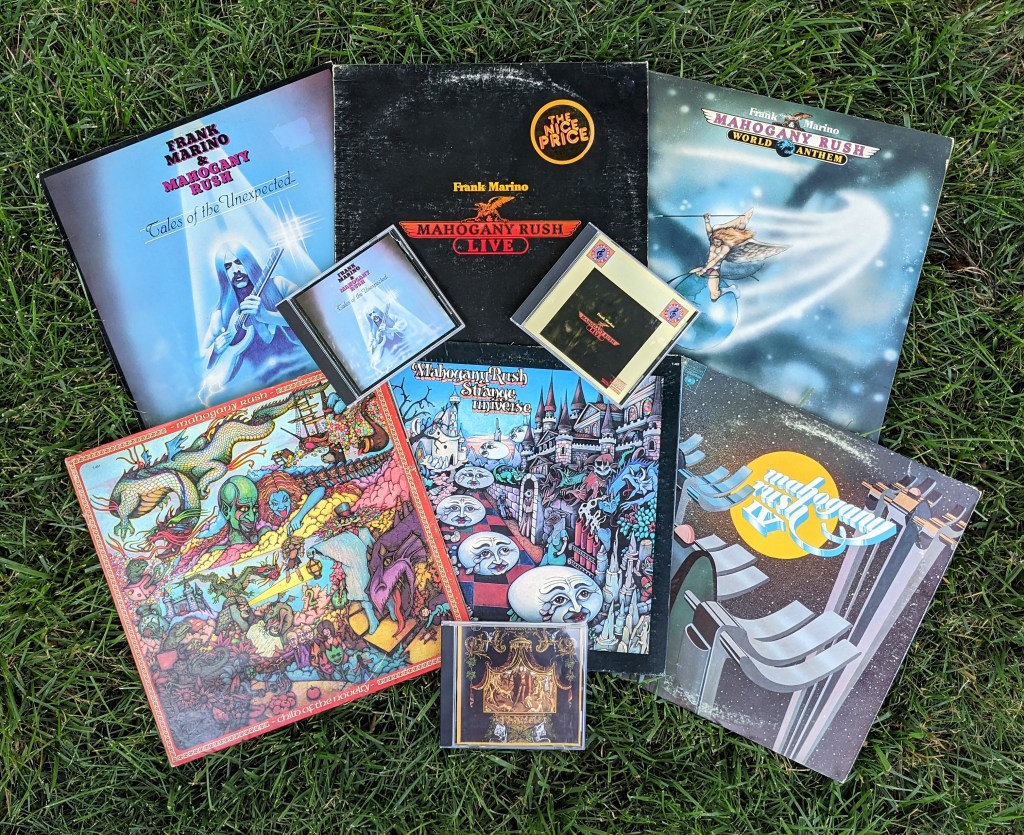
Harsh reality chose to impose itself once again a few days later when I received an email advising that the Frank Marino and Mahogany Rush show scheduled for September 13, 2021, at The Birchmere in Arlington, Virginia, had been cancelled. The explanation for this bad news was provided in a message “From Frank Marino”:
With sorrow I am forced to announce my immediate retirement from touring, and possibly all things related to continuing my career, due to an unexpected and debilitating medical condition which makes it impossible for me to tour. I want to thank all the people who supported me all of the last half-century. I know that many were looking forward to seeing us play this fall and I was looking forward to getting out again and doing more shows, but it now appears that in the absence of a miraculous recovery, my Concert DVD (Live at the Agora) will constitute the last show I will ever have played.
Perspective matters. I lose a good story and a much-anticipated night of rocking out, but it seems that Frank is in the process of losing much more. He ends his message with the following plea:
I ask any that are believers to include me in their prayers.
It seems I have another reason to miss the days when I was able to simply believe.


I wrote a tactless limerick:
There once was a baby named Gino
Who sampled routinely the vino
While mom offered nipple
He opted to tipple
And now he’s a wino in Reno
I will now show myself the door.
It was morbid curiosity that first drew me to Hand.Cannot.Erase. I was fascinated when I read that Steven Wilson‘s 2015 album had been inspired by the true story of British woman in her thirties who died in the apartment in which she lived alone and whose body was only discovered two-plus years later. It was said she had family and friends but somehow had not been missed. The additional, possibly apocryphal detail that wrapped presents for a niece and nephew were found in the apartment reinforced the story’s sadness. Being something of a gloomy type, I was seized. I ordered the CD immediately.

It is best described as muddling through, a general numbness suspended occasionally by daydream moments of serenity. Adamant, obstinate efforts at planning, manipulating and avoidance bring only fleeting reprieve. No light flickers at the end of what may not be a tunnel after all but rather an abandoned mineshaft. The vague promise of a swaddling warmth that sometimes haunts the foggy margins fails to fully coalesce.
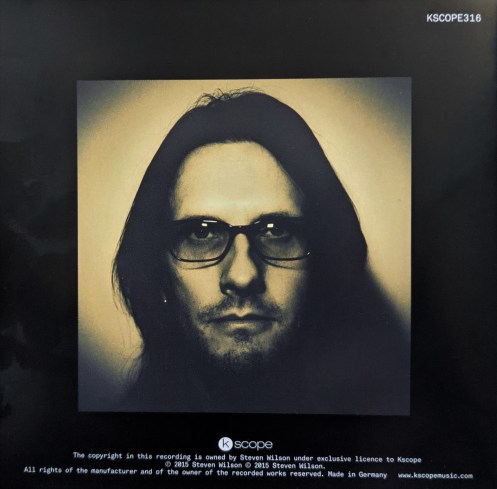
I was aware of Steven Wilson through Porcupine Tree — a band whose music I tended to respect more than listen to — in addition to having heard he collaborated in some way with Opeth — another group in which my interest was more theoretical than actual — but I had not been moved to explore his solo work. Even when I ordered Hand.Cannot.Erase., it was its cited inspiration that had attracted me rather than the artist himself. So, after the CD arrived, I focused on trying to suss the story in the lyrics rather than listening to the musical whole. Finding only allusions instead of a direct narrative I soon set the album aside, leaving it to languish on my shelves.
It sits right at the edge of me. At times it feels like it will break wide open but it never does. When it wells up, seemingly on the verge of full dilation, any active effort to facilitate its forward march leads instead to withdrawal. Resisting release and yet refusing to depart, it rests in the periphery in between false labors.
Fast forward to 2018 and I decided to grab a ticket to see Mr. Wilson and band play live in Phoenix. In those heady pre-pandemic days I was opting in to almost any hard rock or heavy metal show that came through, seeking to make up for 20 years spent in assignments abroad that precluded all but the occasional concert. Hand.Cannot.Erase. all but forgotten, my pre-show preparation was limited to streaming Porcupine Tree’s Deadwing on the drive to the venue.

The gig turned out to be excellent. Not knowing much of the music beforehand allowed me to soak in it, eschewing attention to individual songs in favor of taking in the whole. The musicianship was amazing and the music progressive, ranging from hard-edged riffs to poignant rolling piano to extended soaring guitar excursions. Wilson’s vocals were often yearning, and when accompanied on a few refrains by Israeli singer Ninet Tayeb, whose band had opened, the resulting atmosphere was epic and mesmerizing. Googling Ninet afterwards, I found that she had guested on some of Wilson’s studio work and further, that the moments that had moved me so much in the live setting were from the very album I had so hastily forsaken.
As with a shaken soda pop, careful start-stop venting can slowly reduce internal pressure while protecting against unwanted spills. However, the temptation to just rip off the tab and release the full force in one staining belch is strong. Lacking confidence in the ability to exercise a measured touch, it often proves easier to simply forego immediate refreshment and return the disturbed container to the shelf, leaving it on its own to somehow dissipate the tension.
Revisiting Hand.Cannot.Erase. with new ears, I discovered what I now consider to be a masterpiece of progressive observation. I had been wrong to expect that Wilson would simply narrate the heart-rending story that had intrigued him, and later me. Instead, he immerses the listener in its broader setting, creating through music and words a world in which we are better able to discern and contemplate the deeper soul of the tale. Wilson has crafted an immensely perceptive, musical essay on the nature of modern isolation. While emotional AF, the prog rock opus remains anchored in compassion throughout, never straying into the maudlin. I mean it as high praise when I say that, when sitting on my shelf, Hand.Cannot.Erase. rates as just one more great album amongst many, but it carries the unique distinction of consistently, if fleetingly, rising to become my absolute favorite record of all time each time I lose myself in its thrall.
It is hard to pinpoint exactly from whence the obstinance originates. In the millisecond before rote suppression, minute leakage leaves little doubt that positive could be attained via the liberation of negative. This counterpoint consistently fails to coalesce into any tangible form, however. It remains content to cast its haze across all and sundry, leaning back in a self-satisfied Mussolini pose while repeating with malignant glee, “Because I damn well said so.”

The album begins with hints of Rush, Camel, and Pink Floyd as Wilson delivers an extended opening declaration of deep empathy (3 Years Older). “I can feel you more than you really know,” he says while perceptively describing the life of the modern isolated. The journey continues with insightful commentary, musical and verbal, on the familiar life paths that contribute to isolation. First, a soft lean toward progressive pop shows us the slow drift of romantic love taken for granted (Hand Cannot Erase), after which arrives a spoken word tale of mislaid friendship over church organ synths and muted trance percussion (Perfect Life), and finally comes an extended tour de force of quiet, progressive epicness, with vocals shared between Wilson and Ninet, in which aging parents find themselves existing beyond the departure of their children from the nest (Routine).
At this point, the focus on the individual is left behind in favor of calling out the choices made and passive acceptance that furthers the spread of isolation. A prog-metal intro recalling King Crimson and soaring David Gilmour-style guitar poems soundtrack an angry tirade against the tyranny of online existence now infecting humanity. “Download sex and download God… Download the life you wish you had” (Home Invasion). Next comes a gently strummed acoustic reminder that today can be the start of a new, positive path out of the funk if passivity is set aside, advice which unfortunately comes to naught as change is repeatedly put off until tomorrow (Transience). More epic prog goodness follows as Society comes in for scorn for its failure to identify its slowly disappearing members and bring them back into the fold before they completely fade away (Ancestral).
The musical journey ends on an optimistic piano-led note as one of the isolated catches themselves just before succumbing to the quicksand, deciding to reach out to a long-lost loved one. Putting pen to paper, no excuses are made but a sincere desire to reconnect is expressed (Happy Returns). Were the listener ignorant of the true-life story that inspired the album, a reassured smile would accompany removal of the headphones. Knowing what we know however, the dénouement in the final lyric is devastating:
Do the kids remember me?
Well I got gifts for them…
But I’m feeling kind of drowsy now
So I’ll finish this tomorrow
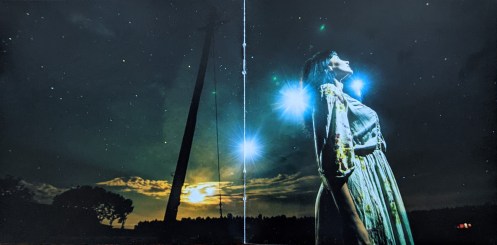

I have never seen the film, first released in 1980. I vaguely recall seeing the first 5-10 minutes of it many years ago, likely on rented VHS and possibly with college roommates. I have no recollection of the reason we stopped watching and retain nothing beyond a wide-angle scene of a mountainous tropical landscape and a happy, chatty group of 30-somethings walking into it, although even that might be a misapplied memory from some other picture. I know that at the time I had no prior knowledge of the movie or the controversy surrounding it.
Late last year it appeared as a recommendation on the home screen of the Shudder streaming service account my daughter and I share. We bought the subscription a few years back in support of our tradition of regular daddy-daughter movie nights featuring select horror stories, creature features, and psychological mind-screws, old and new. By now, I had awareness of the film and its notional tagline as the most disturbing film of all time; the two of us agreed that it was not for us. I did subsequently give in to the clickbait one lonely late-night but exited within less than a minute upon realizing where I was headed. What the hell could I have been thinking?
If I am honest, I must admit that I harbor an uncomfortable fascination with the idea of the film. By ‘idea’ I do not refer to its plot – as much as I have indirectly come to know of it over the years — but rather to its existence and place, at some level, in the public consciousness. I do not believe I hide any morbid curiosity for its apparently quite realistic gore nor would I claim any detached, academic interest in the sociological significance of its misogynist and racist underpinnings. Moreover, per descriptions I have read, the horrific and quite real scenes of animal cruelty staged, filmed, and included in the movie repulse and anger me. Even so, I carry an uneasy fear that I will awake, at some future moment, to find myself counted among the sullied who have viewed Cannibal Holocaust.
The above conceded, might we talk for a bit about just how staggeringly great is the music from this film?

I recently obtained the 2015 release by Death Waltz Recording Co. of the original soundtrack by Italian composer Riz Ortolani. It is a physical thing of foul beauty, pressed on 180-gram olive-brown vinyl with dark blood-red splatter and housed in a gatefold cover with stark silver-on-black stylized front lettering, an indefensible full-color screenshot from the movie splayed across the entirety of the interior panel, and a depiction of Ortolani as conductor in red with black shadows on the back. Also included (as seen above) is unsavory “newly-commissioned artwork” conferred on both a 12×12 print and a foldout movie poster, neither of which have any prospect of display on my walls. Finally, extensive sleeve notes – unread by me as of this writing – by filmmaker Ruggero Deodato, three of the film’s actors, and some other dude provide firsthand accounts of the creator’s “vision” and the dysfunctional, antagonistic working environment he apparently fostered during the filming.

The music inside is so varied in style that, were the songs listened to in discrete episodes, it would be hard to imagine them forming a coherent whole. Taken together, they achieve a narrative flow, albeit an off-kilter one with herky-jerky transitions between erratic rapids and calmer waters. It ranges from sinister to upbeat, full orchestra to funk combo, sometimes all in the same track. The overall effect is a sense of contemplative melancholy, although not a totally unpleasant one. It brings to mind no anthropophagus.
To present a full picture requires complete dissection:
Main Theme: A mix of strings, acoustic guitar, gliding bass and reassuring synths combine to create a gentle melody. The synthesizer line suggests a muted choir not actually there. This is a song of love, painting a picture for us of a soft-focus Stevie-Nicksian in a long, flowing gown, with spring flowers in her hair as she peacefully twirl-walks through a swaying field of waist-high grasses. Beautiful.
Adulteress’ Punishment: Ominous slow-doom bass punctuated with stabbing synth pulses briefly play us in, violins soon joining to reduce the menace but preserve the tension. This is the sound of an aristocratic mansion in the country barely holding on to the last vestiges of grandeur as vines and decay verge ever closer to their inevitable conquest. Inside, aged occupants obliviously waltz on even as their dance lists toward madness.
Cameramen’s Recreation: Everything seemingly pushed through a wah-wah peddle, funky slapped bass provides the foundation over which a trumpet played by Donald Duck cheerfully lays down the melody. Our feeling is that of a bright summer day on the village green as dapper gentlemen escort loved ones toward picnic blankets and an off-screen carousel. The bass tone slowly evolves from wah-wah to tuba. There’s joy here but we are watching it through lightly fogged glass.
Massacre of the Troupe: Synth pulses are back, accompanied by woodblock claps that suggest disco funk right up until 20 seconds in when dread-filled strings storm in. The pulses now seem increasingly arrhythmic as the strings slowly build toward cacophonic climax. We imagine a red-tinged scene, the speeding car careening up the mountain road toward the inevitable cliff… but wait, what is this? Without segue, we suddenly shift to a few gentle bars of the Main Theme. There is no footing for us here however as the melody quickly dissolves away and the orchestra reasserts itself with sustained notes that never resolve.
Love with Fun: It is the Main Theme, but now it feels as if our record has a slight warp. There is a small warble that makes the eventual, disconcerting segue into woodblock claps and crippled, almost tribal drums all the sourer. We have not yet identified the new musical path when orchestral crescendos enter only to fade out, leaving behind solely synth pulses. When was it exactly that the pulses came in? Were they there before?
Crucified Woman: As we turn to Side B, we wonder if we are thinking too much. Mournful strings and acoustic guitar cast a sad shadow. We think maybe we should just listen, but the mind’s eye refuses to play along, presenting us with a lonely ocean scene. A light, warm breeze blows in with the slowly rolling whitecaps. We watch the sun subsiding toward the evening horizon.
Relaxing in the Savanna: To pull us out of our melancholy comes a jaunty musical concoction somehow successfully combining over its course funky bass, slow-played 70s-porn guitar, Sanford & Son keyboards, and the simple melody of an unremembered but still familiar children’s fairy tale.
Savage Rite: Here we find the sounds of a pivotal Star Wars space battle recorded at 45 rpm but played at 33 rpm. At the moment of what should be the determining climax, we transition via synth pulses to a contrary, sad interpretation of the Main Theme, slowed down and struggling under the weight of a minor chord. The love inherent in the version of the Main Theme with which we began has turned to loss.
Drinking Coco: This is a studio jam, bouncy jazz from joyfully in-sync collaborators pouring out mutual encouragement. The bandleader on electric piano takes flight first, with funky bass, chugging guitar and accommodating drums in support. When the electric guitarist takes a howling turn, it is through an amplifier with a sliced speaker and a build-up of sandy grit in its tubes. Soon, the leader’s piano returns to the fore. The players smile at each other, feeling it, having fun until… it just ends.
End Titles: After introductory pulses and percussion, our Main Theme is once again back, but now it is muffled, seeming to emanate from the room on the other side of an upholstered wall. Looking around, we spy an adjoining door and slowly draw it open until the bright optimism of the gentle melody is restored. We start to believe that the clouds will always part to allow the sun to shine anew. Then we notice that the faux, synthesized chorus seems to now be a tone lower…

Having reached the end, I find the risk of future debasement greatly mitigated. Watching Cannibal Holocaust now would change the listening experience, tainting it. We do not want that.
I remember less about the frog dissection than about the thrill of hearing Van Halen’s self-titled album for the first time. Our 9th grade biology teacher, Ms. Fotheringham, had allowed us to bring favorite music into the classroom, probably believing that the unusual privilege would mitigate the apprehension we might feel in splaying open our individually-assigned, freshly-dead amphibians. For my part, the cool points earned through having brought in the brand-new portable 8-track player with detachable stereo speakers my folks had gifted me for Christmas vanquished any anxiety I might have otherwise felt.
A fellow student, the specific identity of whom is lost to the dustbin of memory but who had an older sibling more attuned to the ‘now’ than us junior high innocents, brought in a brand new tape by a band none of us yet knew. He said the music was “super hard” and mongered the rumor that Van Halen might actually be KISS without make-up, a possibility reinforced in our susceptible young minds by the mention of Gene Simmons right there on the back cover. We cut and prodded as ordered but frog innards could not match the draw of that wild electric guitar sound emanating from those lo-fi plastic speakers; by operation’s end the hook was swallowed and poised for setting.
A few days later I walked the two blocks to my friend Mitch’s house from where we were to be picked up by another bud, Dallon, to head out to a Church dance. Thanks to the fellowship innate to our shared Church congregation (ward), Mitch and Dallon had not abandoned me as a pal when, being a year older, they had ascended to high school and drivers’ licenses even as I remained bottled-up back in junior high. I pushed Mitch’s doorbell multiple times as unrecognized hard rock at high, distortion-level volume emanated from inside, drowning out the chime.
When she eventually appeared at the door, Mitch’s sister Michelle, a high school senior, explained the delay by showing me that, with their parents out for the evening, she had placed the speakers facing each other in the middle of the living room. She had left just enough space in between for the pillows on which she was laying back to enjoy her latest record purchase at maximum volume. Mitch had just gotten out of the shower so she invited me to check out her set-up and the “so rad!” new tunes while I waited. I reclined on her carefully-arranged pillows and she proceeded to launch “Eruption” and “You Really Got Me” at me in a back-to-back barrage so deafening it shook the whole house. Just as Mitch finally came downstairs, Dallon was pulling up in his folks’ faded blue Ford Galaxie 500 Wagon and it was time to go. Leaving Michelle behind in the throes of an all-out “Ain’t Talkin’ ‘bout Love” assault on her eardrums, I knew I had been reeled in and netted.
The dings came one right after the other as I began the long drive back from my day-trip escape to West Virginia’s Spruce Knob. I touched the bell symbol on the dashboard screen to advise Android Auto – why doesn’t she rate a name like Siri and Alexa? – that I wanted to hear her emotionless-yet-friendly voice. Complying, she read me the two arrived messages, one from my son and the other from my daughter, both somberly informing me of the passing of Eddie Van Halen, sad face with tears, sad face with tears.
A quick shift from Helion Prime’s “science-based metal” over to public radio confirmed the bad news. I listened for a bit as Steve Vai explained to a well-meaning but out-of-his-depth interviewer that there was more to EVH than the guitar solo in Michael Jackson’s “Beat It,” before requesting that my vehicular assistant turn off the radio and instead play me some songs by Van Halen.
I entered the moment intent on honing in on and solemnly admiring the instrumental genius of the now late guitar god but quickly found myself not only energetically vocalizing each long-ago emblazoned riff and solo but also sing-shouting along to David Lee’s every shriek, squeal, and yelp. Despite harboring genuine sorrow, it was impossible to be sad while listening to Eddie play. Maybe he doesn’t have to be gone after all…



